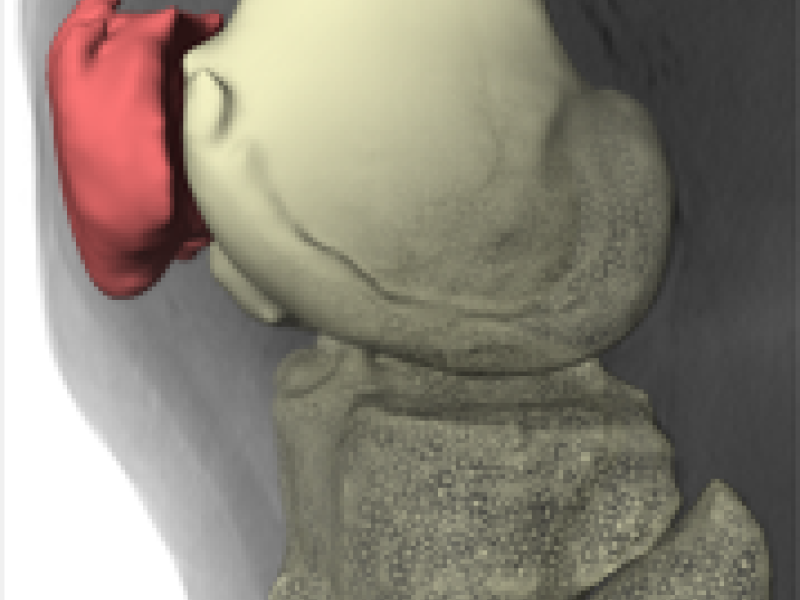A better understanding of the relationship between joint kinematics and joint pain, especially after joint surgery, may provide valuable insights for orthopedic surgeons or companies. This collaboration aims at an extensive analysis of joint kinematics with respect to the bony geometry of the patella, proximal tibia, distal femur (i.e. patellofemoral and tibiofemoral kinematics) and hip joint of subjects before and after total joint replacement, with a particular focus on patients with postoperative anterior knee pain.
During orthopedic surgery, e.g. in knee or hip replacement, software navigation and mechanical systems help to improve surgical outcome. By means of a few digitized landmarks, typical anatomical landmarks or parameters (e.g. hip joint center, rotational axes) are roughly approximated and evidence for intra-operative decision making and surgery planning is derived. In this project, we examine the applicability of fitting a statistical shape model of the distal femur to the sparse point cloud acquired during knee surgery. We further investigate, how 3D reconstruction techniques can be utilized to derive anatomical landmarks from pre-operative 2D X-ray images that are commonly used to plan the size and orientation of the hip-joint replacement. Our hypothesis is that such techniques infer the dense shape of the bone in order to compute anatomical landmarks and parameters more precisely while offering new applications in surgery planning.
